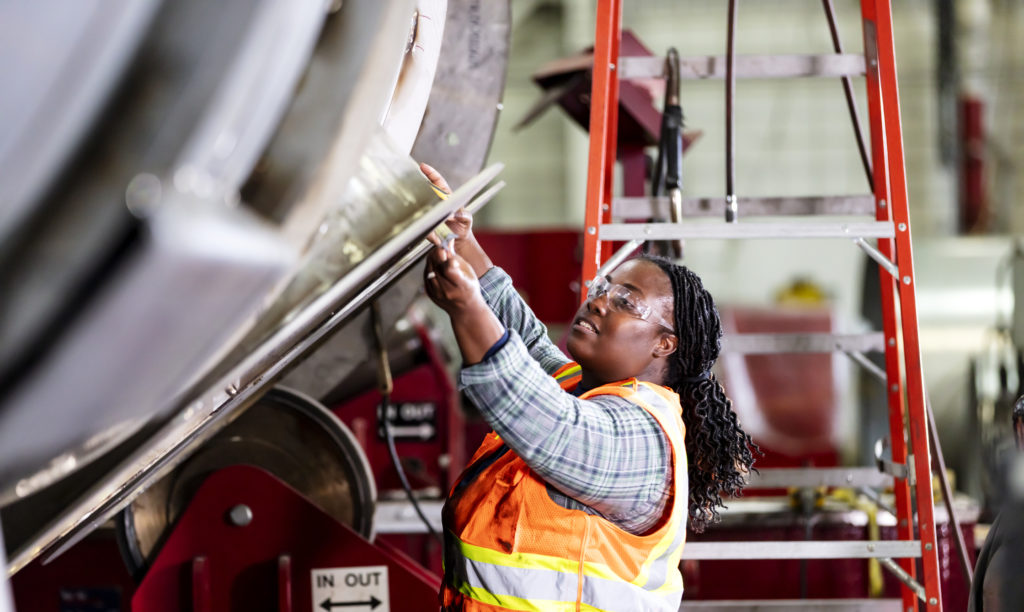
Manufacturing added 30,000 jobs in July, and is up 41,000 jobs from pre-pandemic levels in February 2020. But there are other reasons to reshore production.
The Bureau of Labor Statistics (BLS) unveiled the latest monthly employment figures on Friday, reporting that the United States has now officially gained back all of the jobs that were lost to the COVID-19 pandemic.
That’s great news for the overall economy, of course. But we’d be remiss if we didn’t point out that manufacturing already gained back all of the jobs it lost to COVID in June. And the sector continues to shine, with 30,000 new jobs added in July. BLS specifically noted in its report that factory jobs are now 41,000 jobs above where they were in February 2020.
It’s such good news that President Biden even took to Twitter to humblebrag about the manufacturing jobs numbers specifically:
Typically, manufacturing is among the last sectors to bounce back from a recession, and so it’s amazing to see the sector not only surmounting COVID-related job loss but leading the way for the rest of the economy.
Part of this can be attributed to demand, as consumers spent lockdowns and quarantines buying stuff. But that’s not the full story, especially since jobs levels continue to rise more than three years into the pandemic.
What’s happening is that the United States is finally beginning to put a real industrial policy in place. As it turns out, if you prioritize growing critical industries, it also will lead to job growth.
The recently passed CHIPS and Science Act offers the most compelling evidence of this. That legislation will provide $52 billion in funding for domestic semiconductor production, and tens of billions more for research and development. Already, several companies have announced they will build semiconductor factories in the U.S. thanks to this policy, from Intel’s landmark facility in Ohio to a new $12 billion Taiwan Semiconductor Manufacturing (TSMC) factory in Arizona to a slew of investments in Texas.
While it’s going to take a few years to get those factories fully operational, we’re already seeing the positive impacts, as semiconductors and electric components added 4,000 jobs in July.
There’s more good policy news. It’s worth noting that projects funded by the bipartisan infrastructure bill passed in 2021 are now getting underway, which is certainly adding to job growth. Meanwhile, the Inflation Reduction Act may lead to job growth in some industries — the solar industry in particular seems excited — and there’s growing support to encourage further reshoring and strengthen critical industries, including through passage of key legislation like the Leveling the Playing Field Act 2.0 and proper implementation of Build America, Buy America provisions.
While job creation is certainly a good reason to put all this new policy in place, it isn’t the only one, as proven by another big news story on Friday.
China’s government responded to Speaker Nancy Pelosi’s trip to Taiwan earlier this week by suspending dialogue with the United States on several issues, including climate change, criminal investigations, and illegal drugs. It also cut off communication between military leaders.
Relations are escalating between the two countries, and unfortunately, that puts the United States in a bad position.
As we’ve been warning for years, the United States is woefully dependent on China for a a lot of stuff — including a whole host of components needed for our national security and strategic defense. Meanwhile, much of our medicine now comes from China, from simple vitamins to cancer drugs. Then there are all the rare earth minerals needed to fuel clean energy and electric vehicles; China controls around 85% of the world’s supply and processes even more.
And of course, it’s so much more than that. China has spent the past three decades aiming to create a global monopoly of so many strategic sectors, from steel to rail cars and electric buses.
Industrial policy is essential to maintaining and strengthening our national security. It’s time for the United States to bring supply chains home, reshore critical manufacturing and ensure we can make the things we need, from semiconductors and medicine to fighter jets and wind turbines. We no longer can rely on our biggest adversary for the things we need; we never really could.
And when we build all these new factories, we have the potential to create millions of new jobs along the way.
